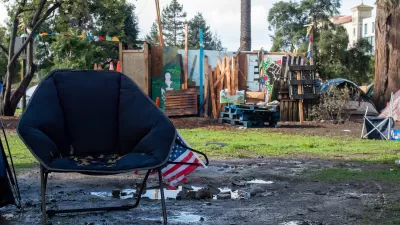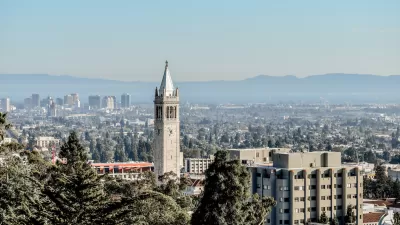Giving dogs the opportunity to play and socialize without restraint has its roots in the free speech movement in Berkeley, California.

Alissa Greenberg writes about the origins of the dog park, a phenomenon that started in Berkeley, California, in the 1970s, as municipalities started implementing stricter leash laws. In 1979, activists from People’s Park took over an empty lot in Berkeley that had been cleared for subway construction.
"[Tom Nigman] was happy to see that, along with the demonstrations and bail fund drives for arrested protesters common at People’s Park, the new space was frequently full of dogs playing and socializing—especially during a period when they were increasingly hemmed in," says Greenberg.
The area eventually became the Ohlone Dog Park, and resident Doris Richards led much of the effort to circulate petitions in support of the dog park, organize residents, and deal with disputes around zoning and noise pollution. As interest in dog parks spread across the country and the world, Richards became an important source of information and guidance for communities wanting to establish their own pet playgrounds.
Greenberg also delves into the impact dog parks have had on the urban landscape and development, particularly in terms of gentrification, and the shift in the role of dogs in everyday life over recent decades.
"In envisioning and creating public space for dogs, [Julie] Urbanik adds, dog park proponents and designers are building on this private idea of a more-than-human family to envision a new kind of public city. A family with children believes they deserve a playground; a family with dogs believes the same," notes Greenberg.
FULL STORY: How Dog Parks Took Over the Urban Landscape

Alabama: Trump Terminates Settlements for Black Communities Harmed By Raw Sewage
Trump deemed the landmark civil rights agreement “illegal DEI and environmental justice policy.”

Planetizen Federal Action Tracker
A weekly monitor of how Trump’s orders and actions are impacting planners and planning in America.

The 120 Year Old Tiny Home Villages That Sheltered San Francisco’s Earthquake Refugees
More than a century ago, San Francisco mobilized to house thousands of residents displaced by the 1906 earthquake. Could their strategy offer a model for the present?

In Both Crashes and Crime, Public Transportation is Far Safer than Driving
Contrary to popular assumptions, public transportation has far lower crash and crime rates than automobile travel. For safer communities, improve and encourage transit travel.

Report: Zoning Reforms Should Complement Nashville’s Ambitious Transit Plan
Without reform, restrictive zoning codes will limit the impact of the city’s planned transit expansion and could exclude some of the residents who depend on transit the most.

Judge Orders Release of Frozen IRA, IIJA Funding
The decision is a victory for environmental groups who charged that freezing funds for critical infrastructure and disaster response programs caused “real and irreparable harm” to communities.
Urban Design for Planners 1: Software Tools
This six-course series explores essential urban design concepts using open source software and equips planners with the tools they need to participate fully in the urban design process.
Planning for Universal Design
Learn the tools for implementing Universal Design in planning regulations.
Clanton & Associates, Inc.
Jessamine County Fiscal Court
Institute for Housing and Urban Development Studies (IHS)
City of Grandview
Harvard GSD Executive Education
Toledo-Lucas County Plan Commissions
Salt Lake City
NYU Wagner Graduate School of Public Service





























